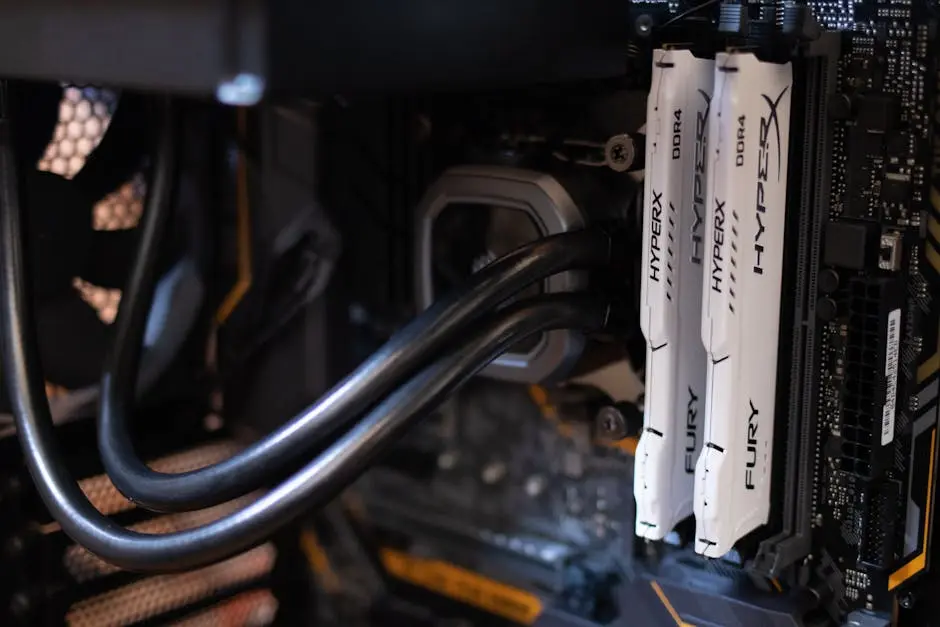Building a custom PC can be an exciting but challenging experience. With so many components available, it can be overwhelming to choose the right ones that meet your needs. This guide simplifies the selection process, ensuring you focus on the right elements while enjoying the journey of creating your personalized machine.

Step 1: Define Your Purpose
Identify what you will primarily use your PC for, be it gaming, content creation, or general use. This helps prioritize the components you’ll need.
For instance, a gaming PC requires a powerful graphics card, while a workstation for video editing demands a high-end CPU and ample RAM. Knowing your primary needs lays the groundwork for a successful build.
Moreover, understanding your usage can also save you money. If you primarily browse the web and create documents, there’s no need to invest heavily in high-end graphics or gaming components.
By defining the purpose clearly, you prevent unnecessary purchases that can quickly drain your budget. This clarity helps streamline your component selection process.
Step 2: Establish a Budget
Determine a budget that reflects your desired components and overall goals. Keeping within a budget can help narrow down your options effectively.
When setting your budget, consider allocating funds based on your priorities. Maybe allocate more to the CPU and GPU for gaming, while keeping storage costs lower initially. Flexibility within your budget can go a long way.
Additionally, remember to account for peripherals and additional costs such as monitors, keyboards, and even cooling systems. These can add up quickly, and having a comprehensive budget will help keep you on track.
Lastly, it may be beneficial to leave a buffer in your budget for unexpected expenses. Building a custom PC can bring surprises; being financially prepared can ease stress during the process.
Step 3: Research Compatible Components
Make sure components such as the CPU, motherboard, and RAM are compatible. Use tools or online resources for compatibility checks.
Understanding component compatibility can save you hours of frustration. Websites like PCPartPicker offer detailed information, ensuring each part works seamlessly with the others.
For example, the motherboard must support the CPU socket type and RAM speeds. Double-checking these specifications is crucial to prevent issues when assembling your system.
Moreover, be mindful of the power supply requirements. If your graphics card demands a significant power draw, make sure your PSU can deliver without hiccups. This knowledge leads to smoother build experiences.
Step 4: Choose Quality Over Quantity
Invest in quality components, even if it means buying fewer pieces. Focus on reliability, warranty, and user reviews to guide your purchases.
It’s tempting to opt for cheaper options, but remember, quality components tend to last longer and perform better. A solid power supply may cost a bit more upfront but can protect your other components in the long run.
User reviews can offer invaluable insights. Checking feedback from those who have used specific components can reveal potential pitfalls or praises that might influence your decisions positively.
In a world teeming with options, prioritizing quality often pays off. Create a shortlist based on brands and components known for their reliability, and you’ll find your build rewarding in both performance and longevity.
Step 5: Consider Future Upgrades
Select components that allow for future upgrades without needing a complete overhaul. This can offer longevity to your custom PC build.
For instance, choosing a motherboard with extra slots for RAM or a CPU socket that supports a range of processors can save you from a costly future rebuild. Upgradability is a wise long-term investment.
Additionally, consider how your requirements might change over time. A PC initially built for casual gaming may evolve into an advanced setup for streaming as your interests expand. Planning for this helps you stay current.
By selecting components with upgrade potential, you ensure your PC remains relevant and capable of handling new software and games without turning to obsolescence.
Final Thoughts on Your Custom PC Build
By following the steps outlined above, you can confidently choose the right components for your custom PC build. Remember to consider your needs, budget, and compatibility to construct a system that fits you perfectly. Happy building!